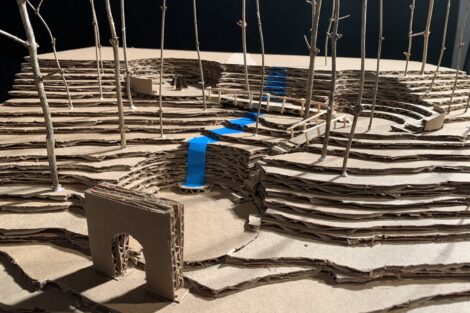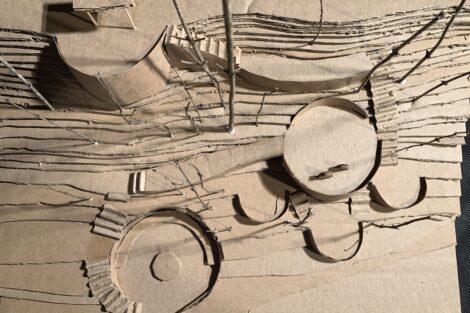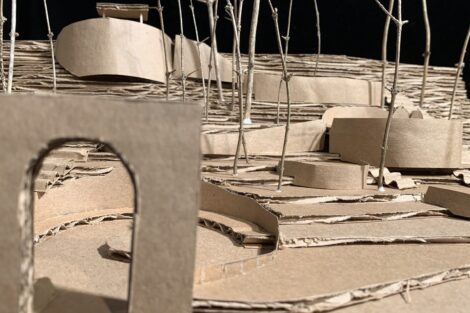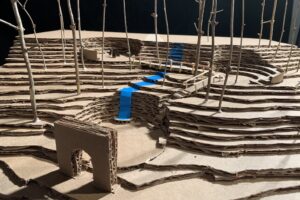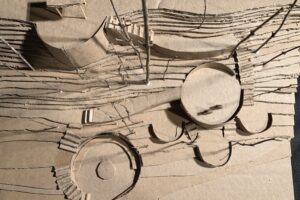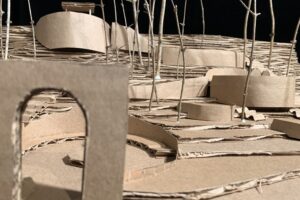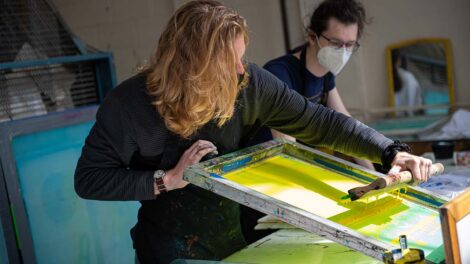Architecture students reimagine campus hillside
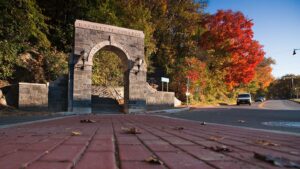
Students in Joe Biondo’s architecture course developed concepts for the stairway that leads students and visitors from the downtown arts campus up to College Hill.
By Stephen Wilson
The view of the College from downtown Easton is striking: the unique design of Williams Arts Campus, the storied stone arch, and the lone figure of a sculpture dotting the top of the hill.
The hill, itself, well, that strikes most viewers differently: All those steps!
But rather than a nuisance or barrier between town and gown, the hill is an opportunity.
The Commonwealth Financing Authority sees it that way. It recently approved a request to create a multi-use trail as well as repair (and heat) the steps and walkway.
But Joe Biondo, architect and instructor in the arts, has seen the hill as an opportunity for years.
Students in his architecture course have tackled a common project to turn the hill into a significant outdoor public space.
“I want my students to think big and to see the enormous potential in creating a destination,” says Biondo. “They develop very thoughtful solutions that transcend the journey from point A to B.”
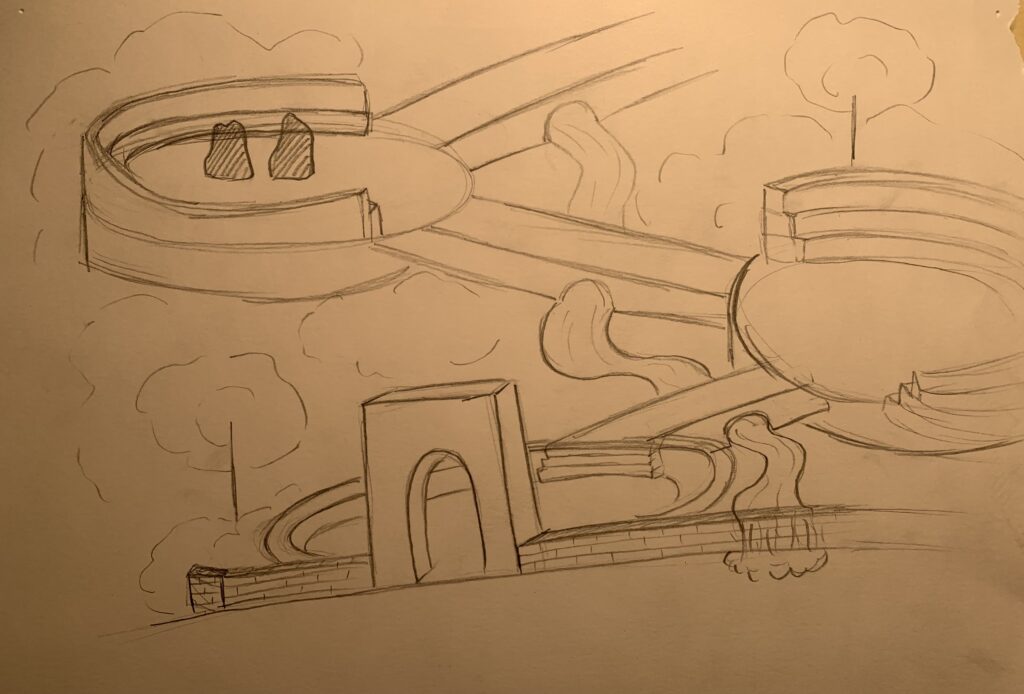
Student sketch of possible hillside experience. Student concepts included short inclines, winding paths, multiple tiers, a waterfall, curated greenery, gathering spaces, amphitheater seating, and natural canopies.
If a journey begins with the first step, these students begin with design thinking, an iterative and nonlinear process that uses empathy to drive design.
That empathy comes from being a user of the hill and an observer of others on the climb up.
“As users, they are required to analyze the problems inherent with the site and, more importantly, recognize the potential that exists,” says Biondo.
There is lots of potential to turn this environment into a living lab for students.
The arch is a symbolic gateway to Lafayette, Easton, and Karl Stirner Arts Trail. The hillside represents a unique landscape for campus—a billboard that introduces guests to the College. And once on the ascent, the views of downtown are lovely.
Students think of the hillside as a destination and then work to create a vision that addresses any safety issues and technical problems while also enhancing the potential.
Through design thinking, teams continuously review and question their solutions to improve their initial assumptions and understandings. The more curious they are, the more creative and collaborative their solutions become.
“The overall goal is to identify alternative strategies and solutions that are not instantly apparent with their initial level of understanding,” says Biondo.
Students visualize their concepts through two-dimensional sketches and then build 3D prototypes.
“The models help validate their vision,” he says.
So if your memory of the hillside is one of hoofing up a steep grade, imagine turning that climb into something more memorable with short inclines, winding paths, multiple tiers, a waterfall, curated greenery, gathering spaces, amphitheater seating, and natural canopies.
Art at Lafayette
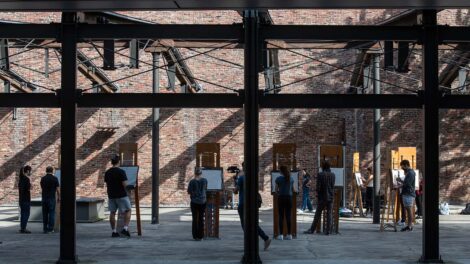
The Department of Art
Our students examine art globally and across time, and work with new media along with established studio traditions. Our dynamic curriculum provides opportunities integrating art history and criticism with art practice.
